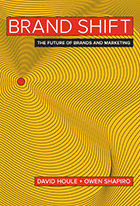latest posts
Beijing 2008: The Not Quite Ready for Primetime Olympics
March 27th, 2008
[Note to readers: this column was written a number of weeks ago, but was in holding as I wrote columns about some more immediate travel related subjects. With the turmoil in Tibet this past week, it is clearly a topic in the news. I have updated the prior column to include the recent upheavals.]
When countries or cities submit bids for hosting the Olympics it is usually done with a great sense of pride and boosterism. The governments and economic vested interests all look to hosting the Olympics as a way to showcase their “world class cityâ€. In the case of …
Omaha Beach
March 25th, 2008
I just returned from a trip through Normandy with my son. The focus of our visit was the beaches of D-Day. I was trying to connect a column billed as “A Future Look at Today†to the powerful emotions I was feeling. On Omaha beach there is nothing on the beach to acknowledge what occurred on June 6, 1944 except for a very modern sculpture dedicated in 2004 for the 60th anniversary. Nearby was a plaque with the words of the sculptor, Anilore Banon, as to his creative inspiration for his creation, “The Wings of Hopeâ€
“So that the spirit which …
An Example of How to Shape the Future
March 15th, 2008
Brasilia, the capitol of Brazil, represents an example of what humanity must do in this early part of the 21st century. In my last column, I discussed the history of this great city and the fact that it was created in the late 1950s to be “the capitol of the third millennium†and that it was built literally in the middle of Brazil hundreds of miles from the nearest city. In other words the eyes of the visionaries who built the city were completely focused on the future. What should a capitol of the future look like? How should it …
Future of Energy – Save Twenty Percent!
February 25th, 2008
It is generally accepted that America could immediately reduce energy consumption by at least 20% if intelligent conservation efforts were implemented at all levels. As a country, we established energy use habits decades ago when all forms of energy were relatively cheap. Lights on in high rise building at night, corridors in hotels and office buildings that are almost painfully bright, lights on in empty rooms and offices, and escalators that move even when no one is on them.











